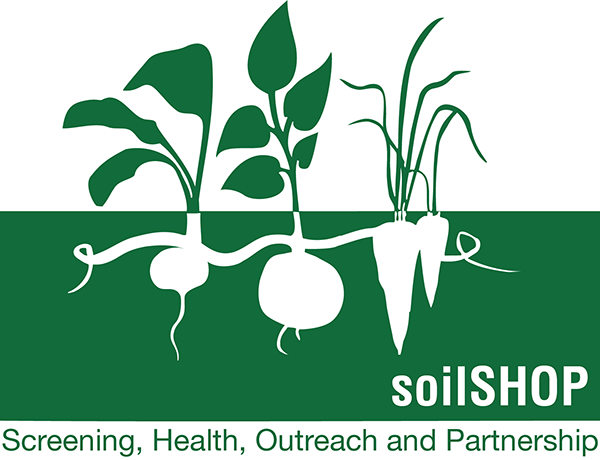soilSHOP

What is a soilSHOP?
SoilSHOP stands for Soil Screening, Health, Outreach, and Partnership. It is a community health education program developed by the Agency for Toxic Substances and Disease Registry (ATSDR). As a participating state, Montana DPHHS staff host soilSHOP events to raise community awareness about lead hazards and how to reduce and prevent lead exposures.
Scroll down to find an upcoming soilSHOP event near you!
What are the benefits of soilSHOP?
- Understand what is in your environment and lower your chances of exposure to lead. There is no known safe level of lead in children.
- Gain information on lead levels in the soil at your home.
- Ask DPHHS staff one-on-one questions.
- Learn easy ways you can keep your family safe from lead.
How does soilSHOP work?
- Collect soil from your yard, garden, etc., and bring up to three samples in a clear sealed plastic bag.
- Be sure the soil is dry and free of debris and plant materials.
- Our trained staff will test the soil sample using an XRF (X-Ray Fluorescence) device to analyze soil samples.
- The XRF allows for quick, real-time screening so results will provide results in minutes. The XRF is a well-accepted and commonly used field instrument for screening soil for heavy metals like lead.
- SoilSHOP staff members will communicate your results to you and provide one-on-one consultation on what your results mean, tips on how to lower and prevent exposures, and resources, as needed.
How do I collect and prepare a soil sample?
For the area, you want to test, collect soil from multiple spots if possible.
- For garden areas, dig 6 inches and collect all 6 inches of soil.
- For play areas, collect soil from about 2 inches deep.
Mix soils from all spots (garden and play areas should be separate, not mixed) in a container and remove large debris. If the soil is wet, dry the soil (e.g., leave the soil in the sun) before packaging the soil in a sealed, clear plastic bag.
Watch the CDC's instructional video (below) for step-by-step instructions on sample collection.
How are soil samples tested?
Trained DPHHS staff use an XRF (X-Ray Fluorescence) device to analyze soil samples. The main benefit of the XRF is that it allows for quick, real-time soil screening results. The XRF is a well-accepted and commonly used field instrument for screening soil for heavy metals like lead.
What are the next steps if I am concerned about soil lead results?
DPHHS staff will provide one-on-one consultation on what the soil screening results mean, tips on how to lower and prevent exposures, and resources if you are concerned about potential lead exposures.
What are some examples of safe gardening practices?
- Maintain a ground cover of grass or mulch.
- Use raised bed gardens with a minimum depth of 18 inches.
- Remove/replace/remediate contaminated soil.
- Practice good personal habits and gardening practices, e.g., wear gloves when gardening, wash hands after gardening, wash produce before eating, and remove shoes outside to limit tracking dirt from your garden into the house.
- Set a good example for children to practice these healthy habits.
Upcoming soilSHOP events
Past soilSHOP events
- 4/15/2024 Gainan's Heights Flowers & Garden, Billings
- 9/15/2023 Threshing Bee Event (Weatherbeater Building), Choteau
- 7/29/2023 Farmer's Market on Fuller Ave, Helena
- 4/29/2023, Gardenwerks, Helena
- 9/27/2022, Capitol Square Farmers Market, Helena
- 8/9/2022, Capitol Square Farmers Market, Helena
- 7/24/2022, Gardenwerks, Helena
To learn more about soilSHOP visit ATSDR's Frequently Asked Questions about soilSHOP

